Descending the clear water of John Brewer Reef, the spires of Jason deCaires Taylor’s Coral Greenhouse come into view fairly quickly. I’ve been dreaming about diving the Museum of Underwater Art for months, and not long after the Queensland border opens, I am given an opportunity, not just to dive it, but to be the first citizen scientist to participate in coral gardening at the installation.
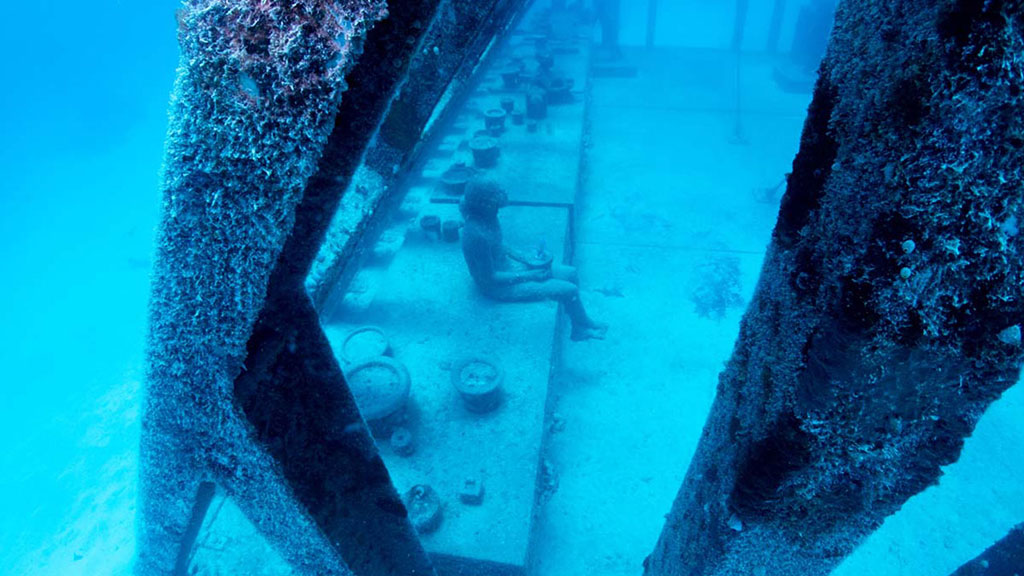
As I continue to descend, I can see several ghostly life-size figures standing around the main structure and some tall tropical-looking trees on the lagoon’s sandy bottom. On closer inspection, I realise all these figures, the Coral Greenhouse’s Reef Guardians, are tending this garden in some way. Some holding planters, some with secateurs looking up at the trees, some with watering cans and some squatting on the sandy floor contemplating a patch of garden.
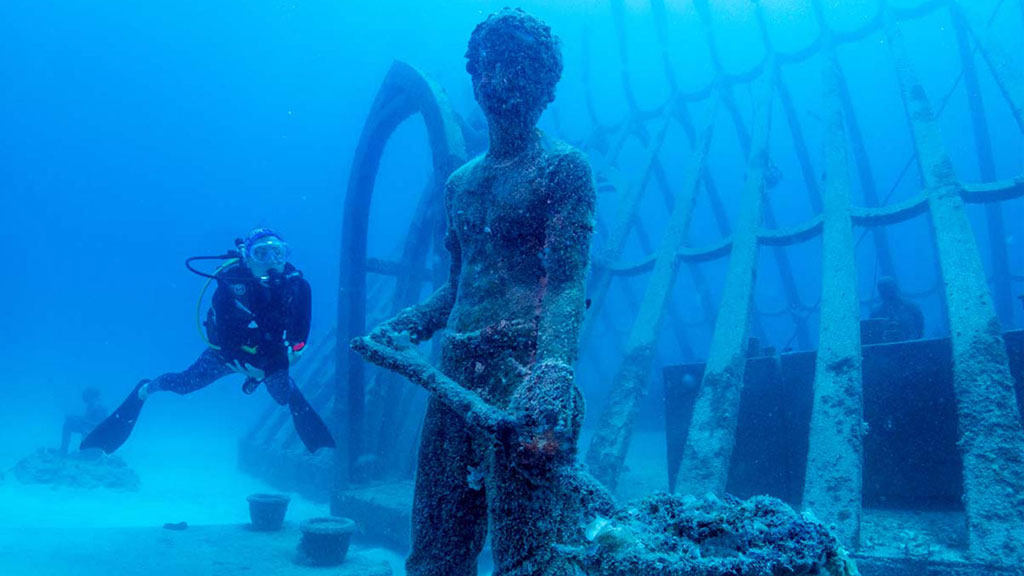
As we enter the Greenhouse we’re joined by a school of barracuda, completely unfazed by our bubbles, and above us large batfish weave in and out the spires of the structure. Smaller reef fish flit about the hanging planters and amongst the soft corals already growing on nearly every surface, and a large puffer fish peers out at me from behind a large plant pot.
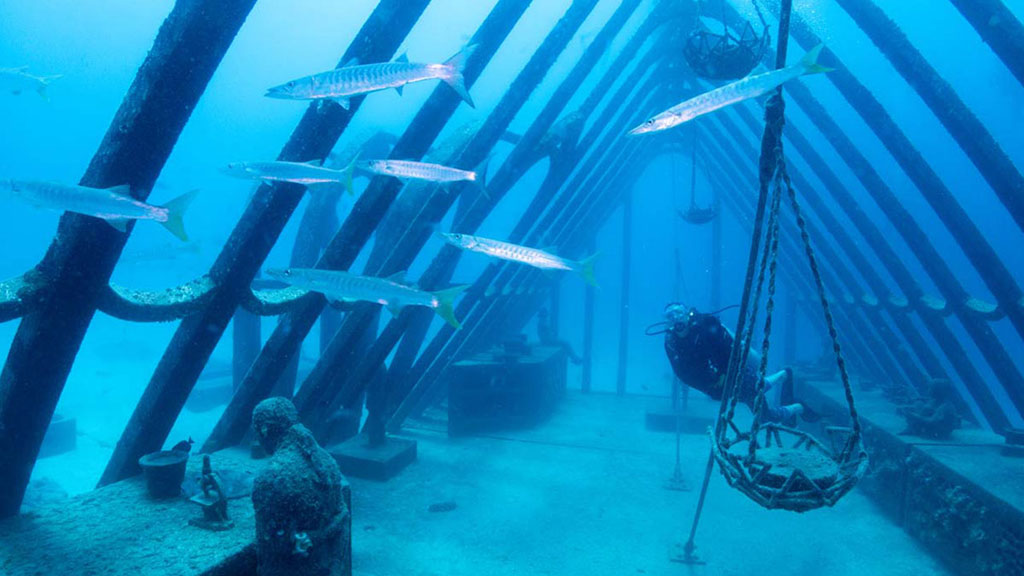
This beautiful installation, inspired by both reef and rainforest, is the second of a planned four structures to be installed as part of deCaires Taylor’s Museum of Underwater Art.
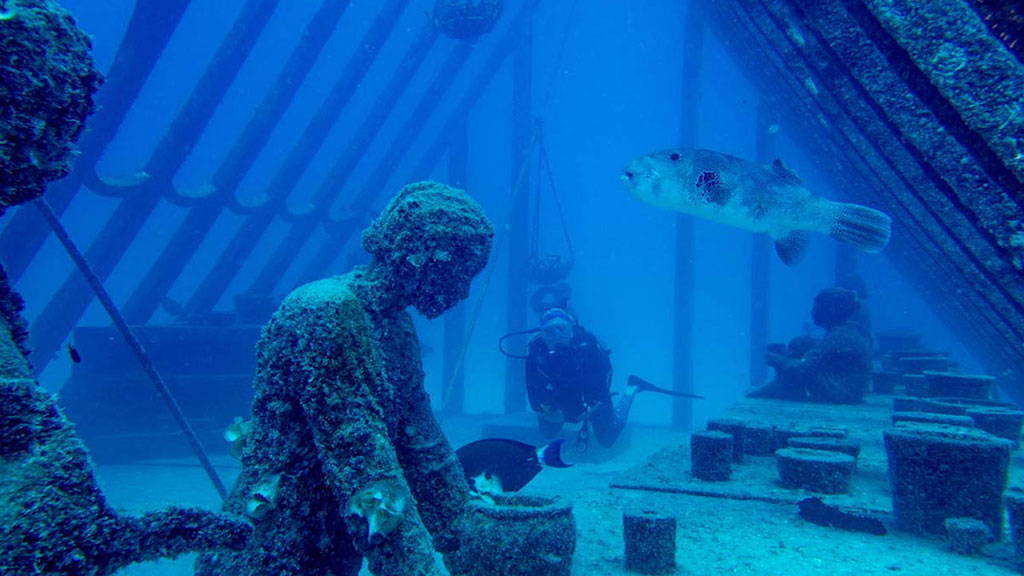
The first, Ocean Siren, is located in shallow water on The Strand in Townsville and was modeled on a local Wulgurukaba Traditional Owner, Takoda Johnson. The Siren illuminates at night glowing different colours indicating live water temperature data from Davies Reef weather station on the Great Barrier Reef, sharing a crystal-clear message (and warning) of the ocean’s increasing temperature and the implications that has on the Reef.
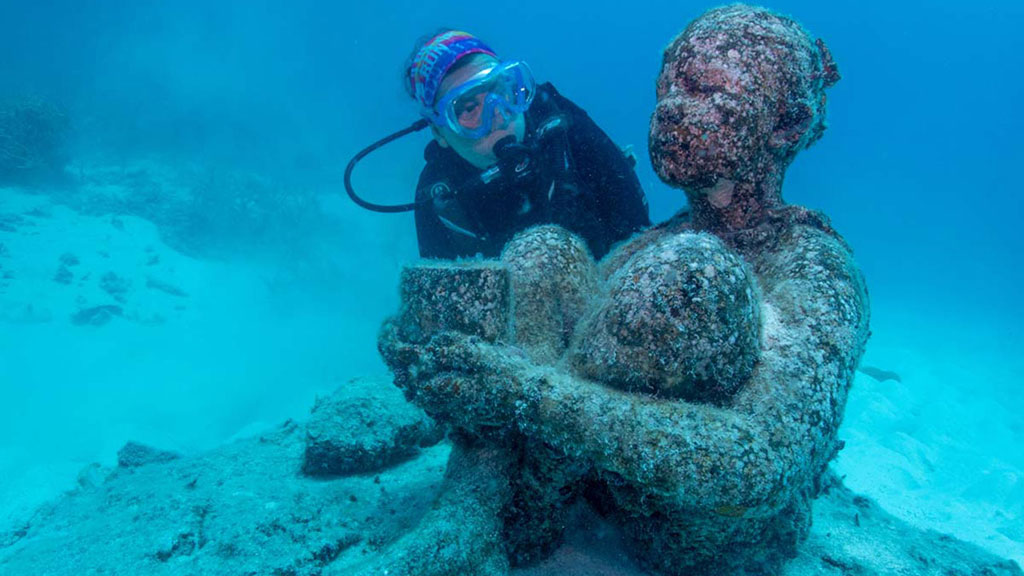
The Coral Greenhouse is deCaires Taylor’s first-ever underwater architectural structure, and it was the sculptor’s wish that the installation would offer opportunities for scientists, marine students and tourists to engage in action-based learning and to conduct research on coral reef restoration.
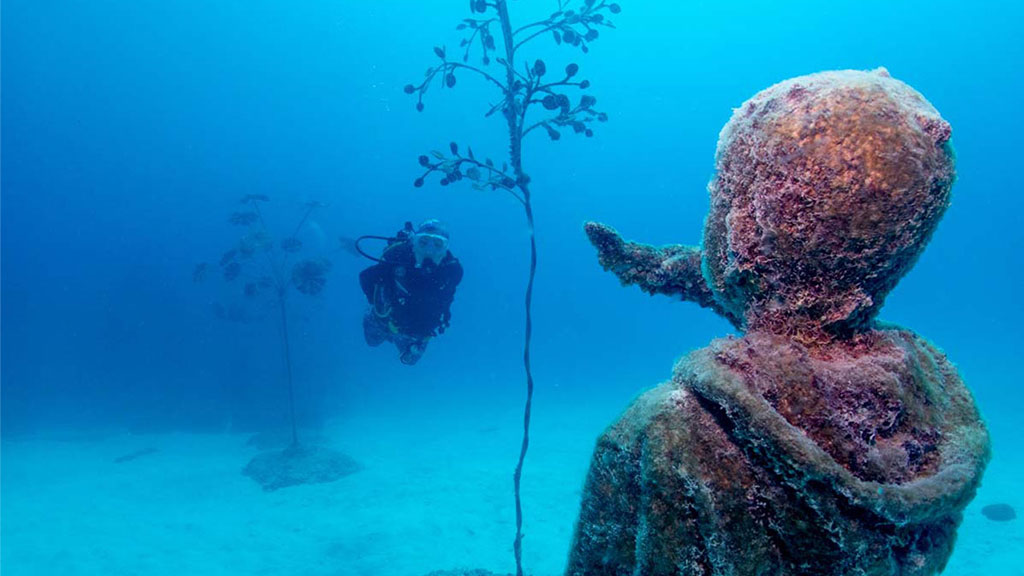
Located approximately 80km from Townsville on John Brewer Reef, around two hours by boat, the structure is made from stainless steel and PH-neutral materials to complement natural coral growth. It sits at a depth of 16 metres and rises up to 12 metres with three main entrance points. There are 25 sculptures outside the greenhouse and eight human figures, benches and other small sculptures including pots, cups, and a microscope inside.
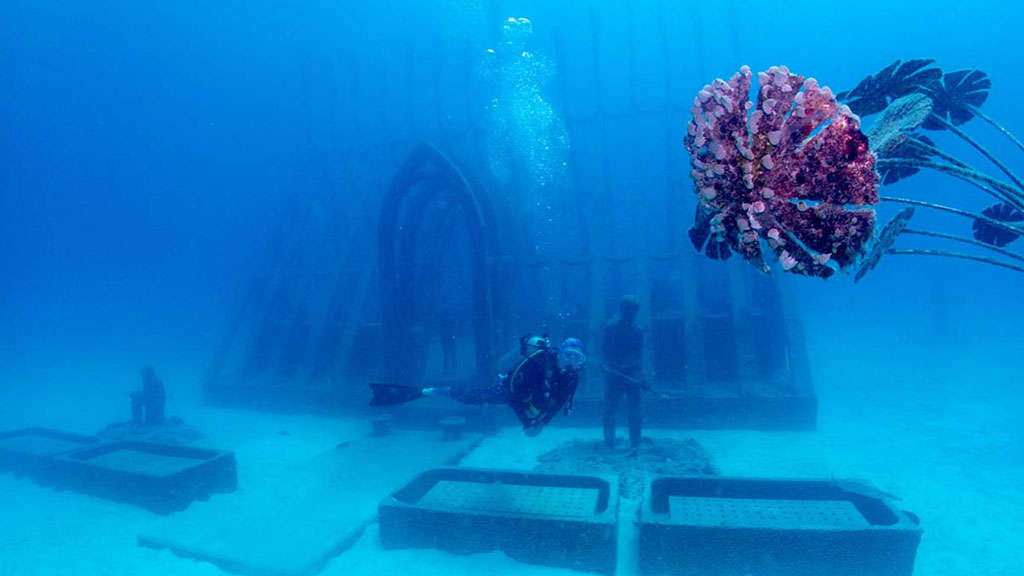
The conservation program associated with the structure is being managed by Reef Ecologic and I was lucky enough to join scientist Gemma Molinaro to plant the very first coral ‘seedling’ in the Greenhouse, as the structure enters a new phase: citizen science coral gardening.
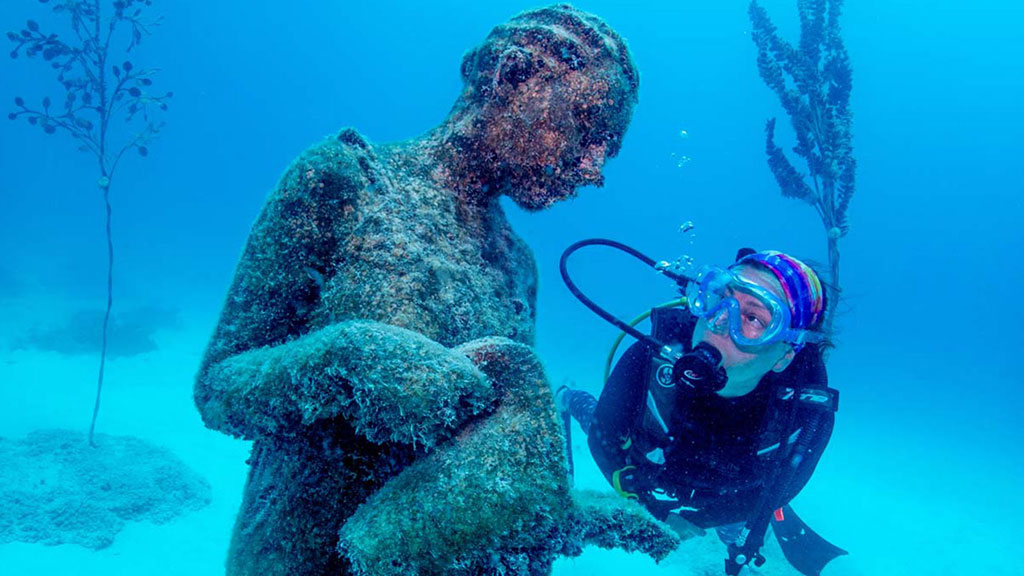
Divers are now invited, for a fee, to join one of Reef Ecologic’s marine scientists in the physical planting of coral at the John Brewer Reef. The fee contributes to the funding of coral gardening on MOUA and supports the local tourism industry.
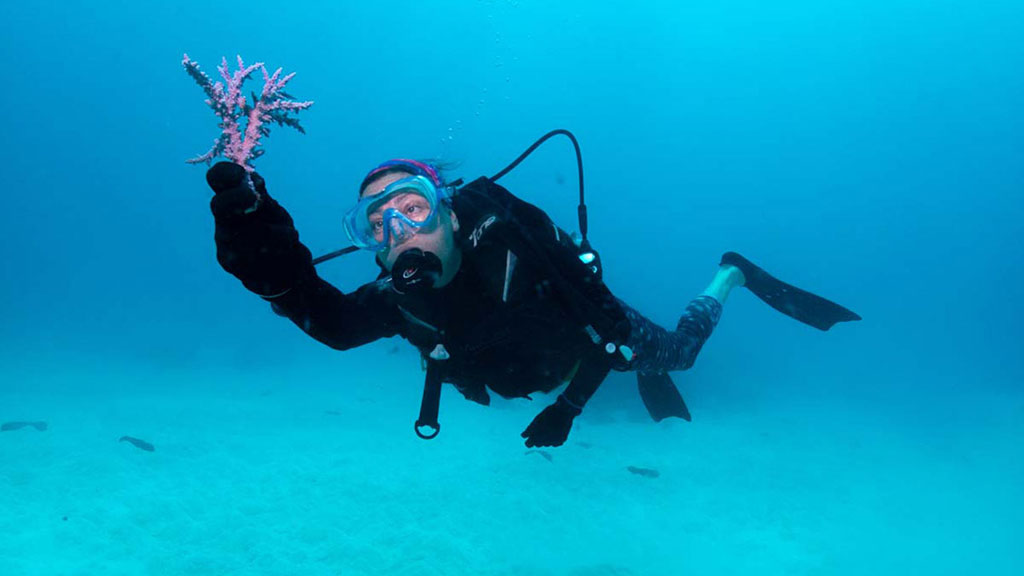
Reef Ecologic will plant ‘corals of opportunity’ in the various pots and planters on one side of the Greenhouse, leaving the other side to attract coral growth naturally, so they can monitor the difference, both of coral growth and fish life.
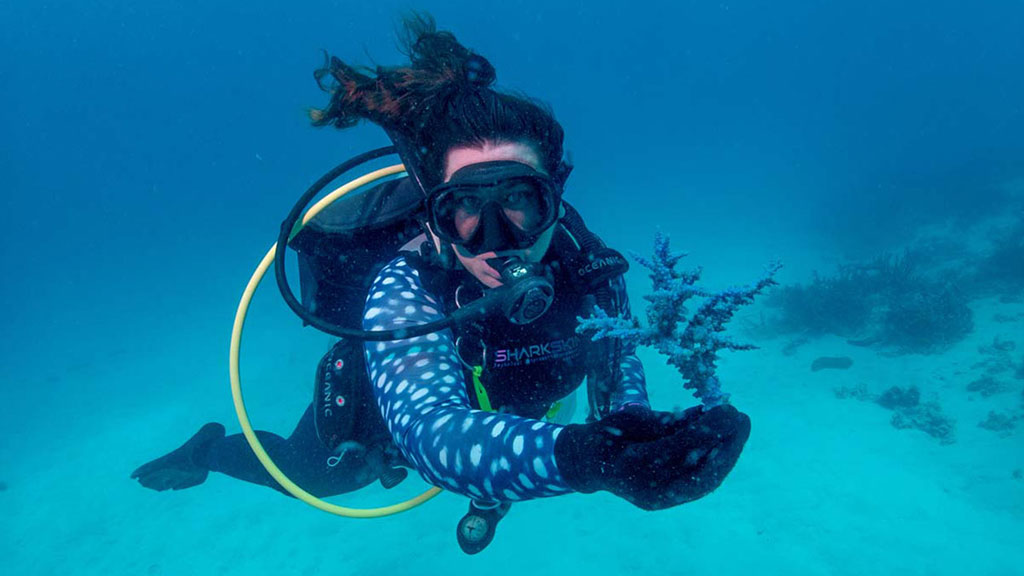
After our initial inspection of the Greenhouse and surrounding garden, Gemma and I swim over to the edge of the lagoon in search of ‘corals of opportunity’, small pieces of coral that have broken off the reef and fallen on the sandy bottom of the lagoon, where without solid footing, they would soon die.
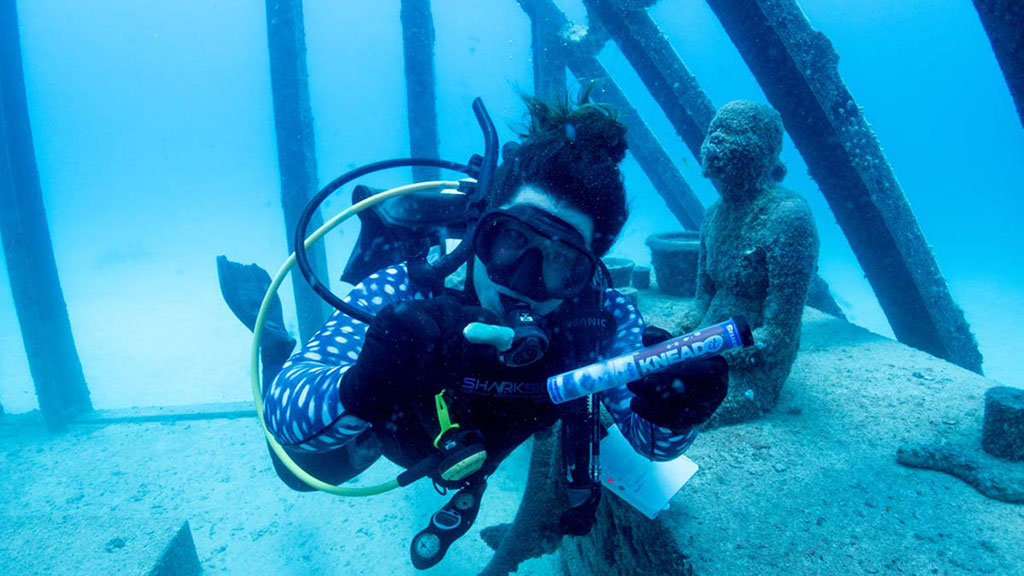
Gemma is in search of a particular type of coral, one that will fit nicely into the chosen plant pot. After scouring the sea floor, we finally find a suitable piece and head back to the greenhouse, where we prepare the surface of the pot with a little scrub and fix the coral seedling in place with some Selleys Knead, a hand kneadable fast setting epoxy putty.
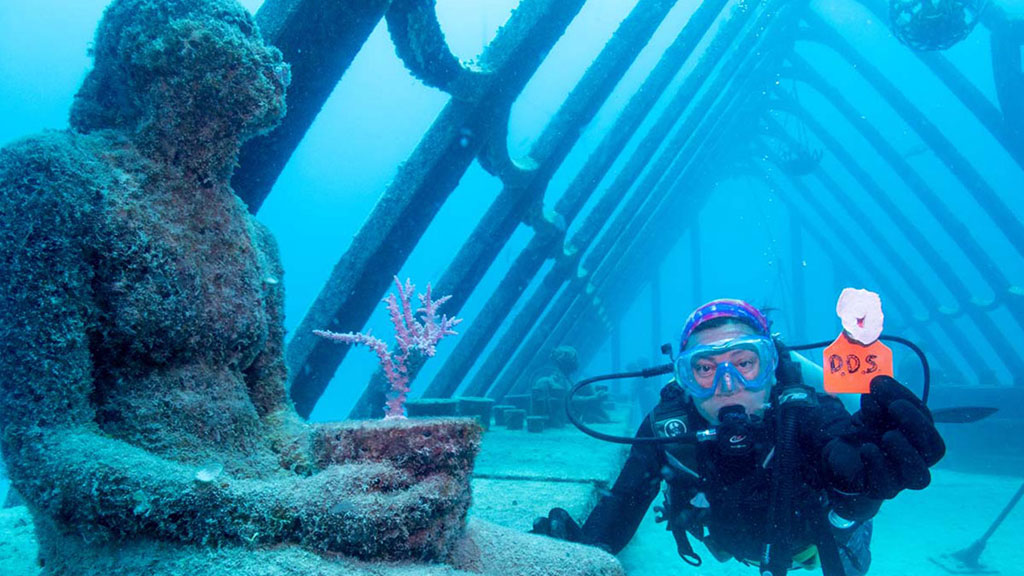
Once our little seedling has been planted, we measure it, tag it (No. 1), take a photo – both for research and posterity – and head off to explore the reef wall. The reefs in this part of the Great Barrier Reef are rarely visited, so it’s a treat to dive the outside walls of John Brewer Reef while we’re here, after spending time weaving through the Greenhouse and surrounding garden.
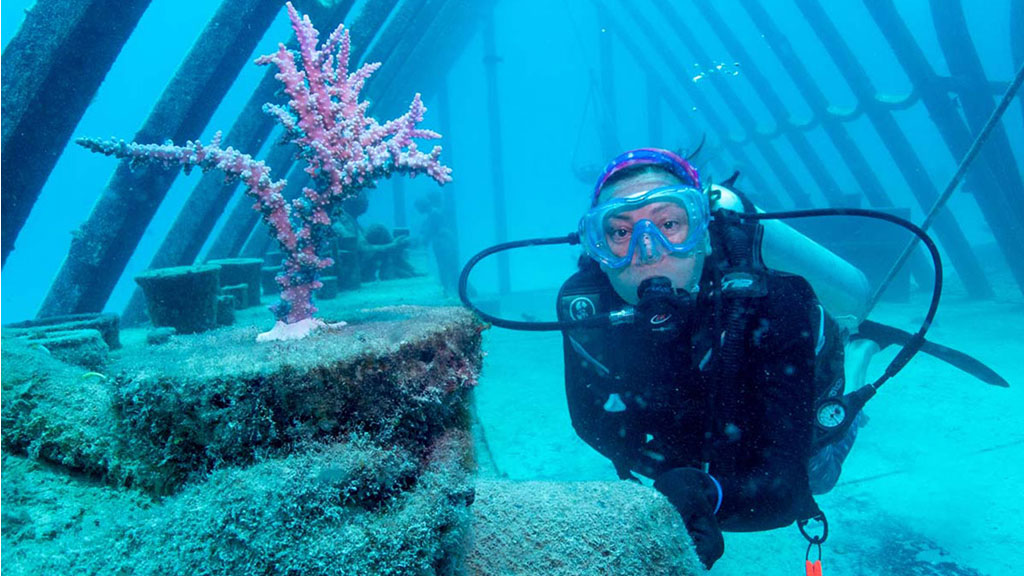
The Coral Greenhouse is located near one of the prettiest sections of John Brewer Reef, with a nearby channel, festooned with soft corals, whips and gorgonian fans, leading to the outer wall where we’re greeted by a sloping wall of vibrant coral, teeming with reef fish.
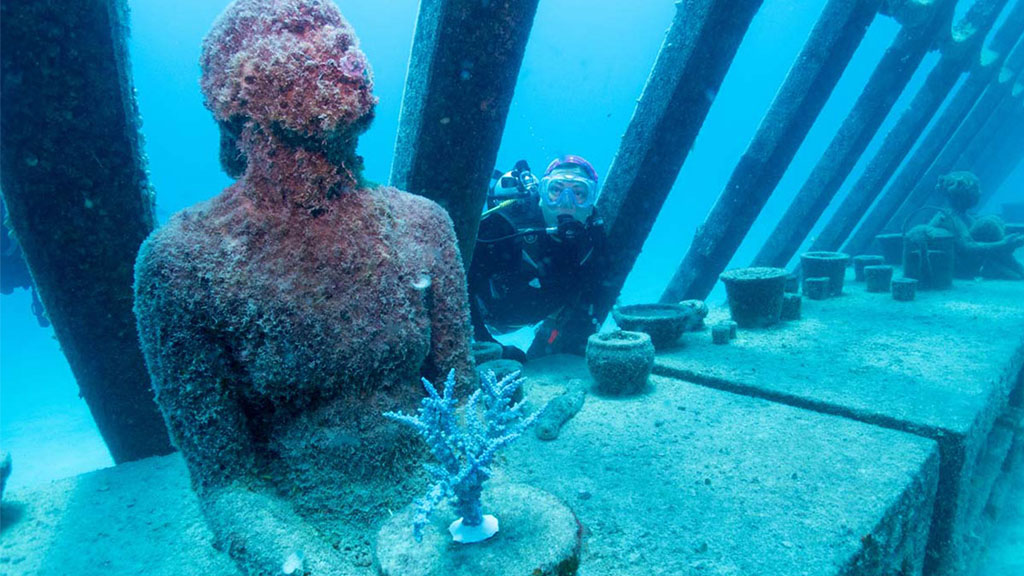
The experience of planting the first coral seedling on the Museum of Underwater Art, indeed, the first coral seeding on any piece of underwater art in Australia, was incredibly special. Equally inspiring is the main objective of this project, a collaboration of art, science and storytelling, to inspire ocean advocacy.
The Museum of Underwater Art can be dived with Adrenalin Dive on Thursdays and Sundays. Adrenalin also run 2 to 3-day Reef & Wreck liveaboard trips each month which also include diving the wreck of the Yongala.
Contact us for more information on the Grow the Reef experience, or visit Townsville North Queensland. Click here to donate to the Kickstarter campaign.
Photography by Gemma Molinaro Photography. Find Gemma on Instagram here.





